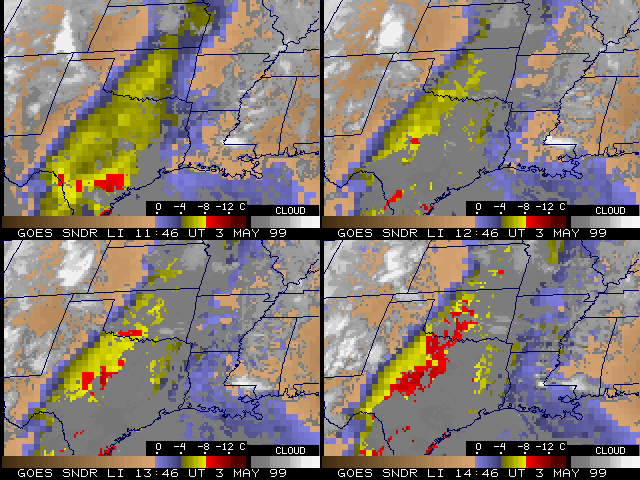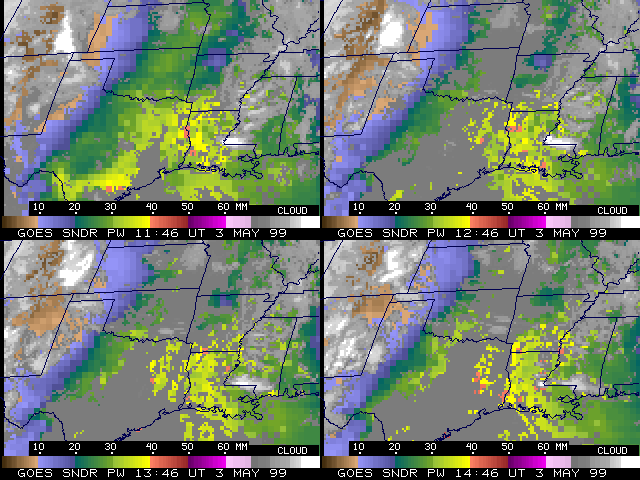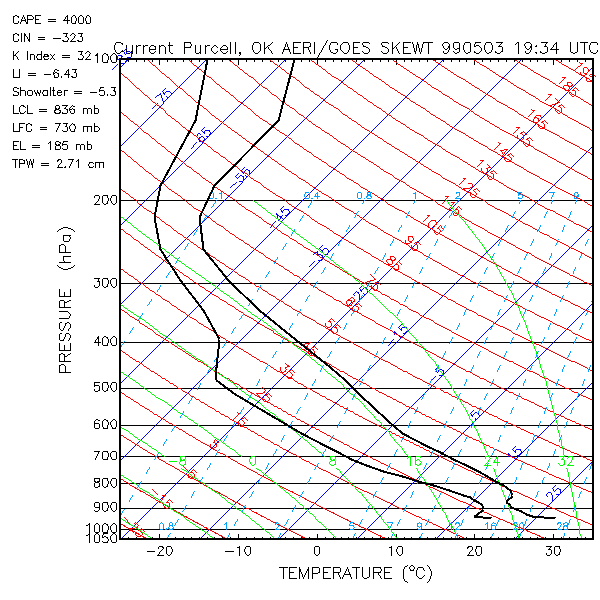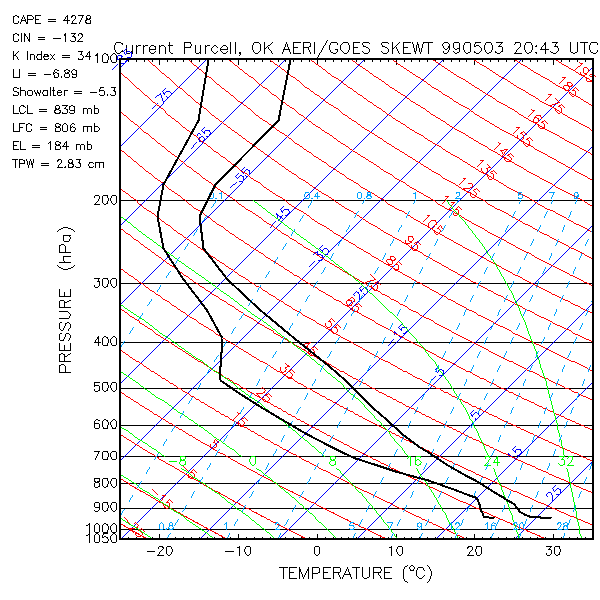03 May 1999 -- Oklahoma Tornado Outbreak
|
|
|
|
|
|
A significant outbreak of tornadoes occurred across Oklahoma and Kansas during the afternoon and evening of 03 May 1999. Hail as large as 4.5 inches in diameter was also reported in parts of Texas and Oklahoma. NWS damage surveys indicate that widespread F4 and F5 tornado damage occurred. NOAA GOES-8 visible and InfraRed (IR) imagery above show the explosive development of convection across southwestern Oklahoma after 20:45 UTC. Several overshooting tops are evident on the visible imagery, and an "Enhanced-V" signature was exhibited on the 10.7 micrometer IR imagery. A loop of 6.7 micrometer IR (water vapor) imagery shows the approach of an upper-level shortwave trough during the afternoon hours; strong upper level divergence indicated that synoptic-scale upward vertical velocities were being enhanced as a jet streak moved across Oklahoma.
GOES-8 Sounder lifted index (LI) and total precipitable water (PW) derived products are shown below. During the morning hours preceeding convective development, a trend of rapid destabilization was evident from central Texas into Oklahoma (LI's dropped to -8 C and lower, red enhancement); the moisture gradient appeared to increase slightly along the dry line across western Oklahoma.

|

|
GOES-8 Sounder data is combined with AERI retrieval data to produce skew-t/log-p thermodynamic diagrams from Purcell (in southcentral Oklahoma) at 20 and 21 UTC, just prior to the convective development (below). Note how the low-level "capping inversion" near 850 hPa is eroded from 20 to 21 UTC, allowing organized updrafts to penetrate above the level of free convection. In that 1-hour period, the CAPE increased from 4111 to 4681 J kg-1, and the lifted index (LI) decreased from -7.48 to -8.22 C; convective inhibition (CIN) decreased from -259 to -69 J kg-1. A time series of convective indices for the 4 Oklahoma AERI/GOES sites shows the trend of rapid destabilization during the afternoon hours leading up to the development of the supercell convection.

|

|
